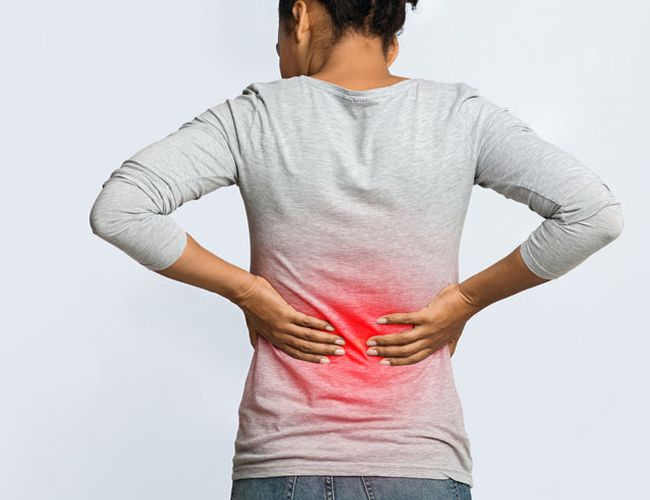Backache after giving birth
Aching back after giving birth? This complaint is surprisingly common.
Backache after giving birth, known as postpartum back pain, affects the vast majority of new moms. Why does it happen? The body releases the hormone relaxin during pregnancy, which loosens up the joints and ligaments in the pelvic girdle to expand the hips in preparation for birth.
The downside of this is that it can cause hyper flexibility (a further-than-normal flex) in all the joints and muscles, resulting in instability, which can cause lower back pain. Even after birth, this hormone level remains elevated for up to four months, which means the backache may not subside until then.
Other factors need to be considered too. Sometimes, babies lie in the posterior position, putting added pressure on the sacroiliac nerves, resulting in back pain. The way you give birth plays a part, all that pushing puts serious strain on your back, and it is widely believed that the epidural also causes back pain.
When duty calls
Nowadays, most expectant moms work right up until a week or two before delivering, meaning there is precious little time for relaxation. Add to that mix bad posture and a generally inactive lifestyle, and you have a recipe for aches and pains that inevitably arise once your little bundle arrives.
Once baby is born, it of course means you’re carrying (and lifting, rocking and holding) your baby constantly, you’re sleep deprived and feeling just a little overwhelmed, all of which can compound backache.
Treatment and prevention
“If back pain is not managed correctly and asymmetry has occurred, the pain may not subside and a biomechanical assessment will be needed to restore stability,” says Christin Stewart, a biokineticist from Lander and Pursad Biokineticists within the Sports Science Institute of SA.
What you can do:
While time is probably the best medicine for a sore postpartum back, there are other ways to get your body back on track.
During pregnancy
Avoid gaining excess weight, be aware of your posture at all times and try to do moderate exercise for the whole nine months. “Core and pelvic stability should be maintained throughout pregnancy,” advises Stewart. Pregnancy Pilates classes is highly recommended. They’re a safe way to maintain pelvic floor strength and postural changes under supervision. Correct sitting and lifting techniques should be followed when pregnant to decrease the chances of back spams.
After pregnancy
Start exercising gently six weeks after birth (with your doctor’s permission). Easing into undemanding exercises, like pelvic tilts, can start you on the road to recovery. To slowly rebuild muscle mass and strengthen ligaments, start by doing low-impact exercise such as walking, cycling and swimming.
Be conscious of your bending and lifting habits: Bend from the knees, not the back when you lift your baby (or those groceries). When you're feeding, try not to sit hunched over. Be aware of your posture and try to sit straight up. Treat yourself to a massage – you deserve it!
See your doctor or chiropractor if pain persists. Remember, despite what Hollywood would have us believe, it takes time for your body to return to “normal” so be gentle with yourself and try not to do too much too soon.



